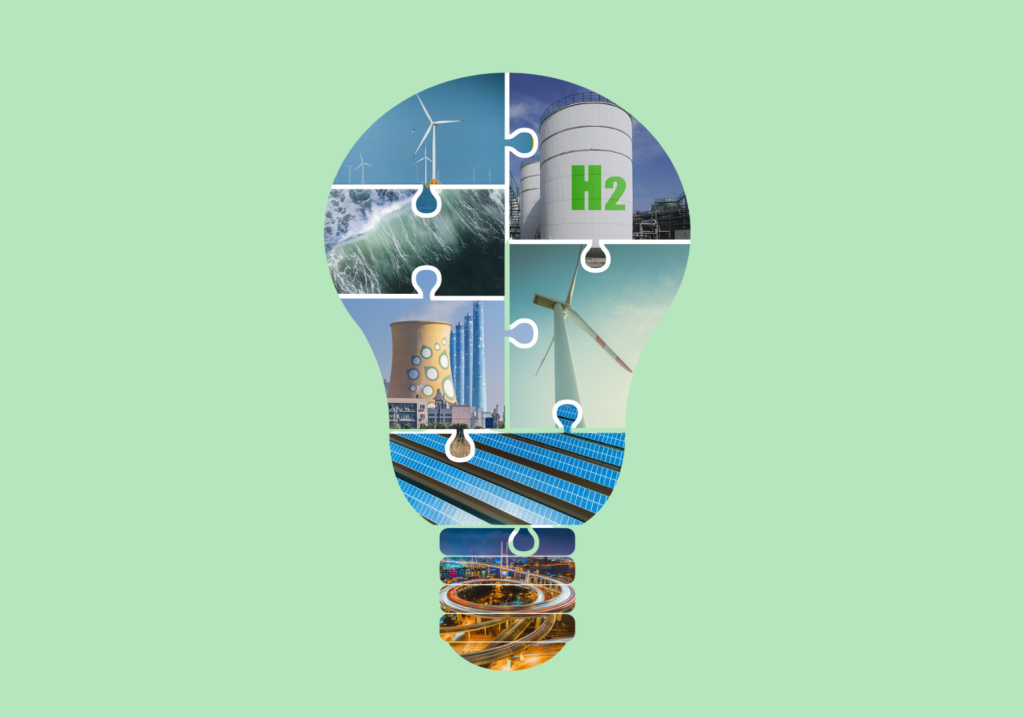From microbes to efficient battery storage, these home-grown start-ups have come up with innovative technologies to tackle climate change.
Methane-busting cow food
Cows are one of the biggest greenhouse gas producers, with a single bovine emitting 154 to 264 lb of methane gas per year through flatulence or belches.
To help to reduce the environmental impacts of this gaseous species, synthetic biology start-up Number8Bio found a way to engineer microbes in animal feed.
The product tackles methane production at the source by influencing cows’ digestive process, known as enteric fermentation.
Also used by other ruminant animals such as sheep and goats, enteric fermentation allows the animals to extract nutrients from plant material that other mammals cannot. However, throughout this process, copious amounts of methane are produced as a byproduct, in a stomach compartment known as the rumen, which is typically expelled through burps.
By bioengineering naturally occurring yeasts as an additive in cow feed, the co-founders estimate up to a 90 per cent emissions reduction per cow.
“We’re looking at locking in increased feed conversion efficiency,” said CEO and co-founder Tom Williams. “If you can stop those methane emissions, there’s actually more of the food available for the animal to grow and produce things like wool and meat and milk.”
Calculating complex scope 3 emissions
Scope 3 emissions, indirect emissions occurring in an organisation’s value chain, are difficult to measure and reduce. These emissions can come from myriad sources, for example business travel or emissions produced by a company’s suppliers, and can often make up the lion’s share of an organisation’s emission profile.
With Australia introducing mandatory climate reporting in 2024, including material scope 3 emissions, organisations will soon need to come up with a strategy to calculate them.
To help them in this pursuit, Avarni, which counts big four consulting firm KPMG among its clients, has produced AI-powered and data-driven carbon accounting software that calculates scope 1–3 emissions.
The platform aggregates supply chain and spending data into a single dataset that uses AI to help organisations calculate and report their emissions, who can then work with suppliers on carbon reduction strategies.
“We can map transactions and calculate scope one to three emissions in real-time at a 95 per cent efficiency rate,” said co-founder Tony Yammine.
“When an end customer wants to take action, they can use Avarni’s platform to decarbonise more efficiently.”
Upcycling used solar panels
While solar panels are an efficient and renewable energy solution, they are typically relegated to landfill when end of operational life is reached – leading to heavy metal leaching.
But Melbourne based company ElecSome – in collaboration with University of Melbourne, RMIT University and Melbourne-based company OJAS – has developed a circular economy approach that recovers valuable materials from old solar photovoltaic (PV) modules, such as clean glass, silicon cells and polymers.
When upcycled, these materials can be transformed into high-value products such as nano-engineered concrete aggregate SolarCrete – launched by ElecSome Managing Director Neeraj Das last year.
The world-first pre-mixed concrete product uses glass fines from PV panels to partially replace sand.
Replacing raw materials has additional environmental benefits, given the world is quickly running out of sand, which has led to ecological issues such as erosion and flooding.
“This [solution] puts Australia ahead of everyone else to find an environmentally friendly process for upcycling PV modules,” Das said.
Sustainable battery storage
As the world switches towards more renewable sources of energy, including high-powered batteries, superchargers are becoming more commonplace to ensure these energy sources are tapped faster.
For example, superchargers may be used for acceleration in an electric car or to balance supply and demand in power grids.
Ironically, superchargers are made with toxic and corrosive electrolytes, which are not environmentally friendly.
But Newcastle-based company Allegro Energy has developed a supercapacitor using water-based electrolytes, making its product recyclable, non-flammable, non-corrosive and rare -material- free.
Allegro’s supercapacitors can be used to power electric vehicles big and small – from cars and bikes to light rail, e-buses, and mining trucks.
Its second product, the redox flow battery, is a large-scale energy storage solution that also uses the patented water-based technology. Origin Energy recently acquired a five per cent stake in Allegro, and will pilot the redox flow batteries at its Eraring Power Station.
“Our supercapacitors have similar cycling characteristics to current products, and we rate our redox flow batteries for a minimum 20-year life span,’ said Allegro Energy founder Thomas Nann.
“However, given the characteristics of all of our materials, all of our products are set apart because they are much easier to recycle and fully compatible with a circular economy.”
Boosting an ancient carbon capture technique
Solving the climate crisis involves going back to nature, according to this soil carbon start-up’s founders.
Loam is using microbes as a carbon removal solution in the form of a microbial seed coating. When farmers apply the CarbonBuilder fungal to seeds before sowing, the natural ability of plants to store carbon is “supercharged”.
The product is designed for agricultural applications, both removing carbon from the atmosphere and empowering farmers to harness carbon capture.
“With Loam’s technology we’re able to open a door for farmers in the cropping sector – that wasn’t necessarily open before – to genuinely participate in carbon farming,” said Co-Founder and Chief Product Officer, Tegan Nock.
“By applying Loam seed treatment, farmers can accelerate a path towards healthier, more productive soils by driving more rapid increases in soil carbon, which benefits resilience and productivity,” said Loam co-founder Guy Hudson.
